Powet Alphabet: N is for Nintendo Entertainment System
by William Talley, filed in Games, Powet Alphabet on Oct.03, 2009
During the early 80s, the video game market was in danger of dying off before it could take off. Too many manufacturers were releasing too many consoles no one cared for, and developers were making too many games that were mediocre at best. This would lead to a diminished demand for them in the consumer market as well. If that wasn’t enough, the home computer market was slowly beginning to emerge, as PCs were becoming cheaper and more easily accessible to consumers. It would be a fool’s errand for a company to attempt to reenter the market, yet Japanese developer Nintendo would jump in the market head first.
Nintendo was certainly no stranger to gaming or family entertainment. They had existed since the late 1800s, cutting their teeth by making playing cards. During the 70s, Nintendo shifted focus from playing cards to toys, arcade machines, and electronic gaming. They had created a number of arcade games such as Donkey Kong, and In 1983, Nintendo released the Famicom in Japan. Two years later, Nintendo was planning on releasing system to the American market as the Nintendo Entertainment System. After changing around the basic design of the system(the original Famicon had controllers hardwired into a console as well as a microphone built into them), they also had to hit on the right marketing scheme to sell a new video game system to an American market that had been burnt out by over saturation. They marketed the console not as a video game console, but as a toy. Nintendo employed a dedicated marketing team which set up their own displays, conducted telemarketing, and performed in-store demonstrations of their product. They regulated third party developers via shrewd (and somewhat controversial) licensing policies (such as allowing certain publishers to release only 5 titles a year, controlling the amount of cartridges they would have access to, and a 2-year lock out agreement preventing publishers for releasing titles for other consoles) were designed to prevent the over-saturation that had led to the market crash 2 years earlier. They also managed to win over retailers with a risk-free proposition: if the system bombed, they would buy back any unsold units. With very little to lose, retailers took a chance with Nintendo’s console, and it became a complete success, forever changing the direction of the video gaming industry.
What really made Nintendo’s console a success had little to do with their marketing practices. What really made the NES a household name was the library of games that were released for it. Both Nintendo and the third party developers who made games for it put their best feet forward, creating games that were not only fun to play, but have become iconic franchises which have laid out blueprints that have been followed by many of today’s games. This article discusses 10 of the most significant games for the system. Please note, this is not a top ten list. If it were, there would be some games on this list that would be left out.
1. Super Mario Brothers
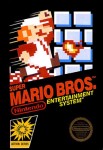 If Super Mario Brothers didn’t create the platformer genre, then they certainly made it into what it is today, introducing many of its characteristics. It also demonstrated Nintendo’s philosophy of making games which are easy to play, yet difficult to completely master. When you powered up the game, you learned exactly what you needed to know within seconds: run to the right of the screen, jump on enemies to kill them, bash your head under blocks to either break them or receive items. After pressing start, you picked up on everything else rather quickly. Despite how easy it was to play the game, it would take even longer to master. There is not a person who played the series who hasn’t tried to find the way to get into the minus world, attempted to master the koopa shell 1-up technique, or discover the right combination of warp pipes in order to make their way to the end of the game. Even today, one can go online and see speed runs of the game. With Super Mario Brothers, Nintendo has made Mario one of the most recognizable cultural icons of the 20th and 21 centuries, ended the 2-year video game sales slump, and created one of the best selling video game franchises of all time.
If Super Mario Brothers didn’t create the platformer genre, then they certainly made it into what it is today, introducing many of its characteristics. It also demonstrated Nintendo’s philosophy of making games which are easy to play, yet difficult to completely master. When you powered up the game, you learned exactly what you needed to know within seconds: run to the right of the screen, jump on enemies to kill them, bash your head under blocks to either break them or receive items. After pressing start, you picked up on everything else rather quickly. Despite how easy it was to play the game, it would take even longer to master. There is not a person who played the series who hasn’t tried to find the way to get into the minus world, attempted to master the koopa shell 1-up technique, or discover the right combination of warp pipes in order to make their way to the end of the game. Even today, one can go online and see speed runs of the game. With Super Mario Brothers, Nintendo has made Mario one of the most recognizable cultural icons of the 20th and 21 centuries, ended the 2-year video game sales slump, and created one of the best selling video game franchises of all time.
Fun Fact: A Japanese-only sequel to this game had a look that was similar to this title. Thus the game that we know as Super Mario Brothers 2 was actually a Japanese game called Doki Doki Panic with the Arabian characters replaced with Mario and pals. We wouldn’t see the Japanese SMB 2 until years later as a Super Nintendo remake called The Lost Levels.
2. Legend of Zelda
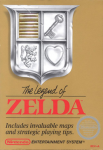 If Mario was the president of Club Nintendo, then the Legend of Zelda’s Link was the vice president. The Legend of Zelda featured exploration, puzzles, and fantasy action. Legend of Zelda would layout the groundwork for console action RPGs. You gained many weapons and objects, and you utilized them to help defeat a dungeon’s boss and access areas that had previously been inaccessible. When you completed the game, a second quest opened up which rearranged the maps and the locations of enemies and power ups. Although he didn’t speak any words (lame TV show notwithstanding), Link would come to be just as memorable a character as Mario, and a Legend of Zelda game (lame CD-I system entries notwithstanding) would be a surefire system seller, be it the original, the N64’s Ocarina of Time, or the more recent Wii entry, Twilight Princess.
If Mario was the president of Club Nintendo, then the Legend of Zelda’s Link was the vice president. The Legend of Zelda featured exploration, puzzles, and fantasy action. Legend of Zelda would layout the groundwork for console action RPGs. You gained many weapons and objects, and you utilized them to help defeat a dungeon’s boss and access areas that had previously been inaccessible. When you completed the game, a second quest opened up which rearranged the maps and the locations of enemies and power ups. Although he didn’t speak any words (lame TV show notwithstanding), Link would come to be just as memorable a character as Mario, and a Legend of Zelda game (lame CD-I system entries notwithstanding) would be a surefire system seller, be it the original, the N64’s Ocarina of Time, or the more recent Wii entry, Twilight Princess.
Fun Fact: Of course provided they had the guts, one could access the second quest from the beginning just by inputting Zelda as their name on the character select screen.
3. Metroid
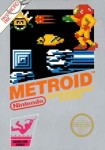 Metroid bought science fiction action to the NES. It also introduced the first hints of the open world genre, as it would be seen in later games such as Grand Theft Auto. As bounty hunter Samus Aran, your task was to make your way through the planed Zebes, defeat the space pirates, and destroy Mother Brain. What was great about the game was that it wasn’t neatly hashed up into levels like so many other games. As with the Legend of Zelda, the entire world was open from the get go, and it was up to you to figure out where to go and what to do. Thankfully the game had a good way of keeping players from being overwhelmed. While you could see what was beyond the horizon, you needed a new item, a new ability, or something to happen before you could access it. Maybe you needed something to help you jump high enough to reach that ledge, or you needed a weapon that allowed you to destroy that seemingly impossible barrier, or you needed a special suit that could help you survive an area with a heat-filled atmosphere. When you defeated Mother Brain and escaped from Zebes, you were greeted with a huge surprise. The guy you just guided to victory wasn’t actually a guide at all, instead it was a female, and if you beat the game in under 3 hours, you even got to see her in her swimsuit. Samus Aran would grow to become one of gaming’s leading female protagonists, and Metroid’s style of gaming would influence several other games, from Castlevania: Symphony of the Night to the Xbox Live Arcade title Shadow Complex.
Metroid bought science fiction action to the NES. It also introduced the first hints of the open world genre, as it would be seen in later games such as Grand Theft Auto. As bounty hunter Samus Aran, your task was to make your way through the planed Zebes, defeat the space pirates, and destroy Mother Brain. What was great about the game was that it wasn’t neatly hashed up into levels like so many other games. As with the Legend of Zelda, the entire world was open from the get go, and it was up to you to figure out where to go and what to do. Thankfully the game had a good way of keeping players from being overwhelmed. While you could see what was beyond the horizon, you needed a new item, a new ability, or something to happen before you could access it. Maybe you needed something to help you jump high enough to reach that ledge, or you needed a weapon that allowed you to destroy that seemingly impossible barrier, or you needed a special suit that could help you survive an area with a heat-filled atmosphere. When you defeated Mother Brain and escaped from Zebes, you were greeted with a huge surprise. The guy you just guided to victory wasn’t actually a guide at all, instead it was a female, and if you beat the game in under 3 hours, you even got to see her in her swimsuit. Samus Aran would grow to become one of gaming’s leading female protagonists, and Metroid’s style of gaming would influence several other games, from Castlevania: Symphony of the Night to the Xbox Live Arcade title Shadow Complex.
Fun Fact: If you enter the password ‘JUSTIN BAILEY’, then you can play as Samus without her power suit.
4. Mega Man
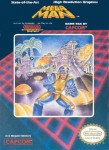 Not only did Nintendo crank out quality franchises, but the third party developers and publishers it employed also had the proverbial fire lit under their rear ends. One of these third party developers was Capcom. Capcom had enjoyed a rich arcade history, creating classics such as Commando, Trojan, and Legendary Wings. Later on, they would create even bigger arcade classics such as Street Fighter, Final Fight, and Darkstalkers. However, their home console support would become just as significant, and they created an original franchise with Mega Man. Mega Man had a unique gimmick: players would select the order in which to play the stages in. After defeating the boss of that stage, Mega Man would receive the boss’s weapon. There was another boss that the weapon would work on, and the trick was to decipher the correct order in which to take them on. After defeating them all, you’d take on villain Dr. Wily in a multi-level castle, where you eventually had to battle the previously defeated bosses again before taking on Wily himself. It was a simple formula, and it managed to spawn 6 installments on the NES alone. It has also branched off into several spin-offs, some successful (the Mega Man X series) and others not so much (Mega Man Star Force). The best games in the series have kept it close to the basic formula established so many years back. In fact, last year’s Mega Man 9, despite being released through various modern-day digital distribution methods (Xbox Live Arcade, Playstation Network, WiiWare), returned the series to a more retro style, complete with 8-bit graphics. Capcom had created a hero that was just as much of an icon as anything that Nintendo was able to create.
Not only did Nintendo crank out quality franchises, but the third party developers and publishers it employed also had the proverbial fire lit under their rear ends. One of these third party developers was Capcom. Capcom had enjoyed a rich arcade history, creating classics such as Commando, Trojan, and Legendary Wings. Later on, they would create even bigger arcade classics such as Street Fighter, Final Fight, and Darkstalkers. However, their home console support would become just as significant, and they created an original franchise with Mega Man. Mega Man had a unique gimmick: players would select the order in which to play the stages in. After defeating the boss of that stage, Mega Man would receive the boss’s weapon. There was another boss that the weapon would work on, and the trick was to decipher the correct order in which to take them on. After defeating them all, you’d take on villain Dr. Wily in a multi-level castle, where you eventually had to battle the previously defeated bosses again before taking on Wily himself. It was a simple formula, and it managed to spawn 6 installments on the NES alone. It has also branched off into several spin-offs, some successful (the Mega Man X series) and others not so much (Mega Man Star Force). The best games in the series have kept it close to the basic formula established so many years back. In fact, last year’s Mega Man 9, despite being released through various modern-day digital distribution methods (Xbox Live Arcade, Playstation Network, WiiWare), returned the series to a more retro style, complete with 8-bit graphics. Capcom had created a hero that was just as much of an icon as anything that Nintendo was able to create.
Fun Fact: A Psp remake of this game, entitled Mega Man: Powered Up features 2-d graphics, a level editor, and the ability to play as the bosses.
5. Castlevania
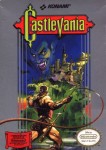 Konami was another third party developer that built its reputation on the Nintendo. It too managed to produce a string of hits that started in the arcade days and continued on with recent titles such as Metal Gear Solid 4. Castlevania was one of their most famous NES franchises, and like many others, it managed to remain relevant well after the 8-bit era. Castlevania told the tale of Simon Belmont’s quest to destroy Dracula. By making use of your vampire killer whip, and a set of sub weapons, you made your way through several levels, battling classic universal monster movie alumni such as the wolfman, the mummy, and Frankenstein’s monster. Castlevania would spawn a franchise of sequels, each expanding upon Catlevania’s rich backstory. Surprisingly, the most current entries in the series take their inspiration from Metroid. Even so, they are every bit as enjoyable as this NES classic.
Konami was another third party developer that built its reputation on the Nintendo. It too managed to produce a string of hits that started in the arcade days and continued on with recent titles such as Metal Gear Solid 4. Castlevania was one of their most famous NES franchises, and like many others, it managed to remain relevant well after the 8-bit era. Castlevania told the tale of Simon Belmont’s quest to destroy Dracula. By making use of your vampire killer whip, and a set of sub weapons, you made your way through several levels, battling classic universal monster movie alumni such as the wolfman, the mummy, and Frankenstein’s monster. Castlevania would spawn a franchise of sequels, each expanding upon Catlevania’s rich backstory. Surprisingly, the most current entries in the series take their inspiration from Metroid. Even so, they are every bit as enjoyable as this NES classic.
Fun Fact: Although they are completely different games, this game, Super Castlevania IV, and Vampire Killer (which was released over here as Castlevania Chronicles) are all the same in terms of the overall series chronology. The arcade game Haunted Castle is also a remake of this game, although the kidnapping storyline is not a part of the original Castlevania.
6. Contra
 Contra was another Konami entry. Although it started out in the arcades, it would be the NES version that players grew up with (as evidenced by the lousy sales of 2006’s Xbox Live re-release of the arcade version). It was also one of the first titles geared toward hardcore audiences. You (and a friend if playing co-op) traveled through several levels, blasting at unending waves of enemies. If one of them hit you, you lost a life, and if you lost all your lives, you had to use a continue. When you lost all your continues, it was game over. While the previous 5 games were safe for kids, only the strongest of the strong stepped up to take on Red Falcon. Of course, you could be a chump and use the famous Konami code, but if you were a real man, then you went through the game yourself using the three lives you were given. After several successful 8 and 16 bit games, the series took a step into mediocrity only to be bought back with the Playstation 2 entry Shattered Soldier. The series was further bought back to prominence with the 2007 DS entry Contra 4, which bought the series back to the white knuckle shooting action that made it famous.
Contra was another Konami entry. Although it started out in the arcades, it would be the NES version that players grew up with (as evidenced by the lousy sales of 2006’s Xbox Live re-release of the arcade version). It was also one of the first titles geared toward hardcore audiences. You (and a friend if playing co-op) traveled through several levels, blasting at unending waves of enemies. If one of them hit you, you lost a life, and if you lost all your lives, you had to use a continue. When you lost all your continues, it was game over. While the previous 5 games were safe for kids, only the strongest of the strong stepped up to take on Red Falcon. Of course, you could be a chump and use the famous Konami code, but if you were a real man, then you went through the game yourself using the three lives you were given. After several successful 8 and 16 bit games, the series took a step into mediocrity only to be bought back with the Playstation 2 entry Shattered Soldier. The series was further bought back to prominence with the 2007 DS entry Contra 4, which bought the series back to the white knuckle shooting action that made it famous.
Fun Fact: The European versions of Contra were renamed Probotector, and all the human enemies were changed to robots due to many European countries’ laws against computer and video games that depict violence against human life forms. Probotector would make his U.S. debut as an unlockable character in Contra 4. This wasn’t the only Contra name change. This game’s sequel, Super C, was changed to such to keep anyone from associating it with the Iran-Contra affair.
Fun Fact #2: The aforementioned Konami code (up up down down left right left right B A start) has many uses in several other games. In addition to its use in Contra, it is also used to grant 10 lives in Super C, 30 lives in Life Force, full powerups in Gradius III (when L and R are used in place of left and right), and unlocks additional features when entered in each game in the Game Boy Advance title Arcade Advance.
7. Ninja Gaiden
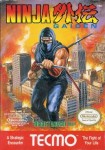 Like Contra, Ninja Gaiden began life as an arcade game that became more popular when it hit the NES, and like Contra, it was also a game for the most hardcore audience. However, the challenge didn’t come from unending waves of enemies (but make no mistake, the game had plenty of these too), but it came from many of the perilous jumps you had to make. One misstep, and you lost your life. What made things even more difficult were the small creatures that casually floated across of the projectiles that were thrown by enemies. Precision was paramount here, as you had to plan each jump in advance. Strangely enough, even though the game was difficult, players still enjoyed it and braved through the challenge just to see what is next. This was no doubt due to the cinematics that took place between each level. These cinemas told more about the game, and added more to the story than the standard ‘save the girl’ plot that we’ve seen so many times before. Years down the road, other games would also feature cinema scenes, and their inclusion became a huge force behind the success of games such as Final Fantasy VII and Metal Gear Solid. As for Ninja Gaiden itself, after 3 entries on the NES and a Game Boy spinoff (which was supposed to be another game altogether) the most we would even see of this series (beside a Super Nintendo compilation package) would be his appearances in the Dead or Alive fighting games. In 2004, Tecmo bought Ninja Gaiden back to Xbox. Although it had nothing to do at all with the previous NES games, it captured the original spirit of using its difficulty to motivate players into trying harder to push farther.
Like Contra, Ninja Gaiden began life as an arcade game that became more popular when it hit the NES, and like Contra, it was also a game for the most hardcore audience. However, the challenge didn’t come from unending waves of enemies (but make no mistake, the game had plenty of these too), but it came from many of the perilous jumps you had to make. One misstep, and you lost your life. What made things even more difficult were the small creatures that casually floated across of the projectiles that were thrown by enemies. Precision was paramount here, as you had to plan each jump in advance. Strangely enough, even though the game was difficult, players still enjoyed it and braved through the challenge just to see what is next. This was no doubt due to the cinematics that took place between each level. These cinemas told more about the game, and added more to the story than the standard ‘save the girl’ plot that we’ve seen so many times before. Years down the road, other games would also feature cinema scenes, and their inclusion became a huge force behind the success of games such as Final Fantasy VII and Metal Gear Solid. As for Ninja Gaiden itself, after 3 entries on the NES and a Game Boy spinoff (which was supposed to be another game altogether) the most we would even see of this series (beside a Super Nintendo compilation package) would be his appearances in the Dead or Alive fighting games. In 2004, Tecmo bought Ninja Gaiden back to Xbox. Although it had nothing to do at all with the previous NES games, it captured the original spirit of using its difficulty to motivate players into trying harder to push farther.
Fun Fact: Like Contra (perhaps you may have noticed a theme here), Ninja Gaiden was also subject to a name change for its European release. Since German laws forbid video games that feature ninjitsu and violent marshal arts, Ninja Gaiden was released under the title Shadow Warriors.
8. Tecmo Bowl
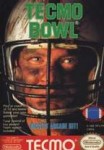 Tecmo Bowl was as significant a title for the sports genre as it was for Nintendo games. As one of the first games to make use of an NFL player’s license, Tecmo Bowl became one of the first video game sports titles to make use of real players. Although there were no real teams, the fictional teams in the game had players such as John Elway, Lawrence Taylor, and Bo Jackson among their ranks. It also featured playbooks, bringing depth to video game sports. Although there were some balance issues and glitches, Tecmo Bowl did a good job of being one of the first football titles to show what the game was all about.
Tecmo Bowl was as significant a title for the sports genre as it was for Nintendo games. As one of the first games to make use of an NFL player’s license, Tecmo Bowl became one of the first video game sports titles to make use of real players. Although there were no real teams, the fictional teams in the game had players such as John Elway, Lawrence Taylor, and Bo Jackson among their ranks. It also featured playbooks, bringing depth to video game sports. Although there were some balance issues and glitches, Tecmo Bowl did a good job of being one of the first football titles to show what the game was all about.
Fun Fact: The sequel, Tecmo Super Bowl, was the first NES football game to feature both NFL and NFL Player’s Association licenses (most other games up to this point either had one or the other, but not both), thus bringing in real NFL teams and players. It is a favorite of ROM hackers, as they release patches with updated team rosters each year.
9. Dragon Warrior
 Dragon Warrior, or Dragon Quest as it was known in Japan, was one of the first console role-playing games on Nintendo’s system. It was a milestone for the genre, as it was the first console RPG to make use of top-down graphics. While its storyline about the legendary hero saving the princess from the dragon was as generic as it got, it’s game play was anything but. You explored a huge world, battled enemies in a menu-driven interface, and learned more about the game’s plot by conversing with townspeople. The real joy of the game however, was leveling up your character into a powerhouse, increasing his stats, gaining new weapons, and learning new spells. While the game was tough at the start, it was only after toughing it out with the game’s enemies, gaining experience points, increasing your character’s level, and learning new abilities that you were able to put yourself on even ground with whatever the game threw at you. Dragon Warrior’s success paved the way for more console RPGS, most specifically games such as Final Fantasy, Chrono Trigger, and even Suikoden on the Playstation.
Dragon Warrior, or Dragon Quest as it was known in Japan, was one of the first console role-playing games on Nintendo’s system. It was a milestone for the genre, as it was the first console RPG to make use of top-down graphics. While its storyline about the legendary hero saving the princess from the dragon was as generic as it got, it’s game play was anything but. You explored a huge world, battled enemies in a menu-driven interface, and learned more about the game’s plot by conversing with townspeople. The real joy of the game however, was leveling up your character into a powerhouse, increasing his stats, gaining new weapons, and learning new spells. While the game was tough at the start, it was only after toughing it out with the game’s enemies, gaining experience points, increasing your character’s level, and learning new abilities that you were able to put yourself on even ground with whatever the game threw at you. Dragon Warrior’s success paved the way for more console RPGS, most specifically games such as Final Fantasy, Chrono Trigger, and even Suikoden on the Playstation.
Fun Fact: Dragon Warrior is not to be confused with the pen and paper RPG Dragon Warriors, written by Dave Morris and Oliver Johnson. Speaking of which, the U.S. version of Dragon Quest was renamed Dragon Warrior to avoid conflict with American company SPI, who released a pen and paper RPG called DragonQuest. SPI was later bought out by TSR and DragonQuest was later published as a dungeon and dragons offshoot.
10. Tetris
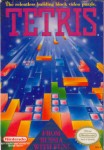 Although Tetris wasn’t created specifically for Nintendo, it was on the NES where it gained the most fame (as well as created a huge amount of controversy). Created by Russia’s Alexey Pajitnov, Tetris was a different kind of game. However, out of all the games on this list, it’s the closest in spirit to the early days of video gaming, where games were all about hand-eye coordination and split-second thinking. Just like in Space Invaders and Pac-Man so long ago, you competed against yourself just to see how high you can score. However, Tetris was like nothing ever seen before. There wasn’t any alien invasion to thwart, terrorist attack to stop, or princess to be rescued. Instead it was a well in which blocks would drop into, and your job was simply to rearrange them and make them disappear by forming lines. It sounded so simple at first, but when the shapes started coming faster, you had to be as quick as you can in order to keep the well from filling up. Tetris has been bought to virtually every computer operating system and video game console, either by an official release or by homebrew, and other puzzle games such as Dr. Mario and Columnus do not stray too far from Tetris’s formula.
Although Tetris wasn’t created specifically for Nintendo, it was on the NES where it gained the most fame (as well as created a huge amount of controversy). Created by Russia’s Alexey Pajitnov, Tetris was a different kind of game. However, out of all the games on this list, it’s the closest in spirit to the early days of video gaming, where games were all about hand-eye coordination and split-second thinking. Just like in Space Invaders and Pac-Man so long ago, you competed against yourself just to see how high you can score. However, Tetris was like nothing ever seen before. There wasn’t any alien invasion to thwart, terrorist attack to stop, or princess to be rescued. Instead it was a well in which blocks would drop into, and your job was simply to rearrange them and make them disappear by forming lines. It sounded so simple at first, but when the shapes started coming faster, you had to be as quick as you can in order to keep the well from filling up. Tetris has been bought to virtually every computer operating system and video game console, either by an official release or by homebrew, and other puzzle games such as Dr. Mario and Columnus do not stray too far from Tetris’s formula.
Fun Fact: There was another NES version of Tetris created by Atari games (who were going by the name Tengen at the time). However, after much litigation, this version of Tetris had been recalled. This was a shame too, as the game featured a two player mode and is considered superior to Nintendo’s release.
These 10 games, along with so many others, laid out a foundation for nearly every game that you see today, regardless of what system it is on. If Nintendo hadn’t taken a chance so many years back, then the video game industry would have died out long ago. If you enjoy gaming at all, then you need to thank Nintendo for revitalizing the gaming industry. Virtually all of these games ara available on the Wii Virtual Console, so check them out.


 PS3
PS3
 Famicom Dojo
Famicom Dojo KEEP PLAYING
KEEP PLAYING KEEP PLAYING: Rewind
KEEP PLAYING: Rewind Powet Toys
Powet Toys Powetcast
Powetcast Hitchhiker's Guide POWETcast
Hitchhiker's Guide POWETcast















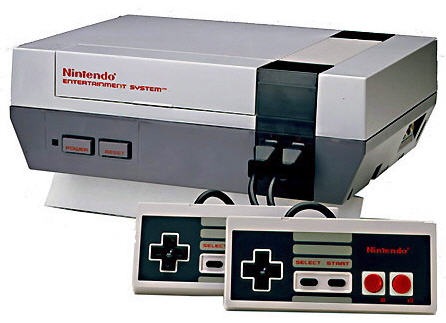

Pingback: Megaman 10 debut trailer - POWET.TV